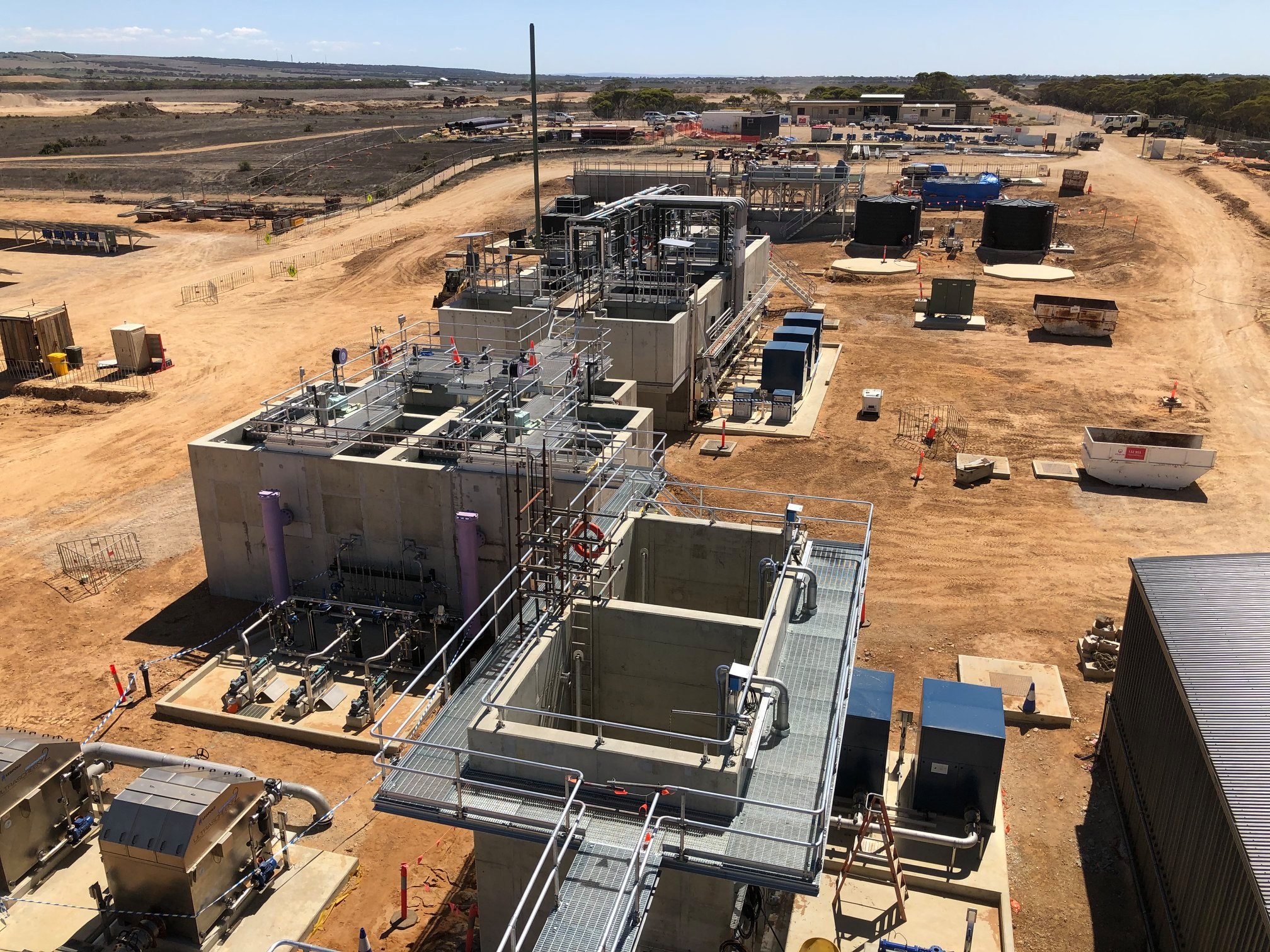New SA Water Plant Sets Australian Sustainability Record
Media Release
SA Water’s new Murray Bridge Wastewater Treatment plant has been awarded the highest design rating to date for a water or wastewater project in Australia, from the Infrastructure Sustainability Council of Australia (ISCA).
The $52 million project received an ‘excellent’ design rating based on its score of 72, beating out previous leader Sydney Water who scored 69 for its Lower South Creek Treatment Program.
ISCA is a member-based, not-for-profit peak body operating in Australia and New Zealand with the purpose of ensuring all infrastructure delivers cultural, social, environmental and economic benefits. ISCA enact this through the application of the IS Rating Scheme across the planning, design, construction and operations phases of infrastructure assets.
South Australia’s newest wastewater treatment plant in Murray Bridge, south-east of Adelaide, became fully operational this week, able to process up to 4.5 million litres of sewage a day from more than 14,000 people.
Project construction began in October 2018, and since this time SA Water has worked with lead contractor John Holland to build the treatment plant and three new connecting pump stations, lay an additional 18 kilometres of underground pipe and install around 420 ground-mounted solar panels at the plant site.
SA Water’s Senior Manager of Community and Stakeholder Engagement Matthew Bonnett said the ISCA rating is testament to efforts by the project team, contractors and suppliers to put sustainability and environmental management at the fore during all stages of the project.
“This includes building climate change resiliency into the treatment plant’s design; minimising waste, dust, noise and vegetation removal during infrastructure installation; sourcing local equipment and supplies where possible; and investing in innovative treatment processes for ongoing operation,” Matthew said.
“A big part of the project’s success has also been working with the local community in the lead-up to and during construction, with site tours and tailor-made education workshops for local school students.”
The new treatment plant, located around 10 kilometres from the township, replaces the 1970s-built facility adjacent the local marina. It aims to support local population and industry growth through a daily capacity increase of two million litres and enhanced treatment processes and odour control facilities.
Mr Bonnett said it was important the new treatment plant’s design went beyond basic reliability, to ensure its operations did not negatively impact the surrounding community or Lower Murray environment.
“To eliminate the source of odour from the previous Murray Bridge treatment plant and the potential for discharge into the River Murray during flood events, we worked with the Environment Protection Authority to investigate solutions,” Matthew said.
“The outcome of this assessment was to adopt improved treatment processes and move the plant away from the river floodplain and residential areas.
“This is a fantastic result for the local community and it’s pleasing to see that after the years of planning and engagement, this new and improved facility is now operating as part of the wider sewer network, and will continue to for many years to come.”
The new plant incorporates an odour control unit, which consists of a bio-trickling filter and activated carbon tanks, designed to remove 99.95 per cent of odour from the plant.
“It also has an advanced biological treatment process called a ‘moving bed biofilm reactor’, which helps to break down sewage into sludge in a more compact, efficient and adaptable way than conventional methods, and Murray Bridge is one of the first non-industrial wastewater treatment plants in Australia to use this technology,” Matthew said.
“As with the previous facility, the plant will continue to recycle 100 per cent of its treated wastewater for irrigation use at a Department of Defence training area and a nearby pastoral property, and the on-site solar array will ultimately generate 150 kilowatt hours a day, helping to power the treatment plant.”
Landscaping and the planting of more than 40 native plant species recently wrapped up at the new wastewater pump station at the corner of Jervois and Swanport Village Road, and an art installation incorporated into the pump station’s design is expected to be complete in coming months.
The installation focuses on sharing with the wider community, the culture of the region’s Traditional Owners, the Ngarrindjeri people, and their connection to water, with an interpretive walking trail through a landscaped area around the pump station and a sculpture of Kungari (swan) eggs being the key features.
Options for the future use of the previous treatment plant site will continue to be discussed with key local stakeholders.
__
For further information contact SA Water’s media team on 08 7424 2477

